#my research!
Note
🧪 (this is such a fun idea!)
So in my lab, we study cells in biofilms. Biofilms are surface-adhered aggregates of microbes living in a matrix of biomolecules that they secrete. The really cool things is that even though a biofilm is a community of individual microbes, not an organism, it actually takes on a lot of multicellular properties. The current thinking is that multicellularity might have arisen as a result of cells living together in biofilms.
The specialization that occurs within biofilms is analogous to differentiation. Biofilms are heterogeneous, even when they are comprised of a clonal population (in which all the cells are genetically identical). There's a division of labor that occurs as a result of stochastic gene expression: one subpopulation of cells might only excrete exopolysaccharides, for example, while another works exclusively at nucleic acid metabolism. This division of labor isn't a result of environmental factors; it's a result of communication between the cells in the biofilm.
But this goes even further - in biofilms, cooperation is actually prioritized over competition between cells, which for a long time was hard to explain from an evolutionary standpoint. Biofilms commonly have cannibalism pathways: as the biofilm matures, the community signals cell types that are no longer needed to lyse -- and they do! After that, the remaining cells - especially the types that are most useful/energetically expensive to the community - will metabolize the remains of the lysed cells. This is darn similar to apoptosis, or pre-programmed cell death, in multicellular organisms. Apoptosis is the process that forms a baby's fingers and eyelids - the tissue tells particular cells to lyse so that gaps in the tissue can be created, then take in the nutrients they leave behind. It's also how pre-cancerous cells are frequently kept in check - the surrounding cells signal cells behaving abnormally to lyse.
Biofilms! Actually fit a number of the traditional "definition by description" criteria for living organisms as a unit rather than as individual cells! Biofilms adapt to their environments, grow and develop, and respond to stimulus. They evolve, after a fashion. Cell-to-cell communication allows biofilms to perform group behaviors all at once in a coordinated way, much as a multicellular tissue would.
This isn't to say that biofilms ought to be considered living organisms; clearly, they are composed of individual, typically prokaryotic microbes. But current thinking is that this is where the multicellular compact (cooperate, don't compete) began! Communities like this are very likely the predecessor to organisms in which millions of cells communicate and differentiate and cooperate. It's a really good transitional state, which is why I love studying communities like this.
If you happen to have institutional access, here is a really great paper on the subject.
Why does this point me to God? Because God gave us these crazy little communities that swap DNA back and forth and talk to each other and die for each other and then he gave us bodies that behave the same way! Just like the Bible is full of repeated ideas and motifs, just like good literature returns and returns to sets of themes, just like music does variations on a line or a theme or a chorus, so too with nature. The study of evolutionary biology is, at least in some respects, digging deep into what those themes are and using them to draw conclusions. Everything is everything; my body's cells and the cells in my petri dishes are more similar than I might ever have guessed.
#my research!#my PI can talk about biofilms being analogous to multicellular organisms for actual hours#it's awesome#ask me hard questions#all truth is god's truth#endless forms most beautiful
8 notes
·
View notes
Note
Rowling isn't denying holocaust. She just pointed out that burning of transgender health books is a lie as that form of cosmetic surgery didn't exist. But of course you knew that already, didn't you?
I was thinking I'd probably see one of you! You're wrong :) Let's review the history a bit, shall we?
In this case, what we're talking about is the Institut für Sexualwissenschaft, or in English, The Institute of Sexology. This Institute was founded and headed by a gay Jewish sexologist named Magnus Hirschfeld. It was founded in July of 1919 as the first sexology research clinic in the world, and was run as a private, non-profit clinic. Hirschfeld and the researchers who worked there would give out consultations, medical advice, and even treatments for free to their poorer clientele, as well as give thousands of lectures and build a unique library full of books on gender, sexuality, and eroticism. Of course, being a gay man, Hirschfeld focused a lot on the gay community and proving that homosexuality was natural and could not be "cured".
Hirschfeld was unique in his time because he believed that nobody's gender was either one or the other. Rather, he contended that everyone is a mixture of both male and female, with every individual having their own unique mix of traits.
This leads into the Institute's work with transgender patients. Hirschfeld was actually the one to coin the term "transsexual" in 1923, though this word didn't become popular phrasing until 30 years later when Harry Benjamin began expanding his research (I'll just be shortening it to trans for this brief overview.) For the Institute, their revolutionary work with gay men eventually began to attract other members of the LGBTA+, including of course trans people.
Contrary to what Anon says, sex reassignment surgery was first tested in 1912. It'd already being used on humans throughout Europe during the 1920's by the time a doctor at the Institute named Ludwig Levy-Lenz began performing it on patients in 1931. Hirschfeld was at first opposed, but he came around quickly because it lowered the rate of suicide among their trans patients. Not only was reassignment performed at the Institute, but both facial feminization and facial masculization surgery were also done.
The Institute employed some of these patients, gave them therapy to help with other issues, even gave some of the mentioned surgeries for free to this who could not afford it! They spoke out on their behalf to the public, even getting Berlin police to help them create "transvestite passes" to allow people to dress however they wanted without the threat of being arrested. They worked together to fight the law, including trying to strike down Paragraph 175, which made it illegal to be homosexual. The picture below is from their holiday party, Magnus Hirschfeld being the gentleman on the right with the fabulous mustache. Many of the other people in this photo are transgender.

[Image ID: A black and white photo of a group of people. Some are smiling at the camera, others have serious expressions. Either way, they all seem to be happy. On the right side, an older gentleman in glasses- Magnus Hirschfeld- is sitting. He has short hair and a bushy mustache. He is resting one hand on the shoulder of the person in front of him. His other hand is being held by a person to his left. Another person to his right is holding his shoulder.]
There was always push back against the Institute, especially from conservatives who saw all of this as a bad thing. But conservatism can't stop progress without destroying it. They weren't willing to go that far for a good while. It all ended in March of 1933, when a new Chancellor was elected. The Nazis did not like homosexuals for several reasons. Chief among them, we break the boundaries of "normal" society. Shortly after the election, on May 6th, the book burnings began. The Jewish, gay, and obviously liberal Magnus Hirschfeld and his library of boundary-breaking literature was one of the very first targets. Thankfully, Hirschfeld was spared by virtue of being in Paris at the time (he would die in 1935, before the Nazis were able to invade France). His library wasn't so lucky.
This famous picture of the book burnings was taken after the Institute of Sexology had been raided. That's their books. Literature on so much about sexuality, eroticism, and gender, yes including their new work on trans people. This is the trans community's Alexandria. We're incredibly lucky that enough of it survived for Harry Benjamin and everyone who came after him was able to build on the Institute's work.

[Image ID: A black and white photo of the May Nazi book burning of the Institute of Sexology's library. A soldier, back facing the camera, is throwing a stack of books into the fire. In the background of the right side, a crowd is watching.]
As the Holocaust went on, the homosexuals of Germany became a targeted group. This did include transgender people, no matter what you say. To deny this reality is Holocaust denial. JK Rowling and everyone else who tries to pretend like this isn't reality is participating in that evil. You're agreeing with the Nazis.
But of course, you knew that already, didn't you?
Edit: Added image IDs. I apologize to those using screen readers for forgetting them. Please reblog this version instead.
#transgender#trans history#transsexual#transphobia#Magnus Hirschfeld#holocaust#holocaust denial#book burning#j.k. rowling#jk rowling#just in case you missed what i mean by all this: go fuck yourself anon :)#trans people have always existed#and we will always exist#if you really wanna pick a fight with me over well-documented history then you better bring in some sources to back your shit#queer history#queer#lgbt+#lgbta+#lgbt#lgbt history#edit: i finally got around to those damn image IDs. i am so very sorry for totally forgetting that's my bimbo moment of the month#also real quick i thought about adding an image of the actual building but the only one i can find has a Nazi parade in front of it#it was taken the day of the book burning raid and honestly if i were to include it then i'd add it to the first few paragraphs#and i think the story's better told when you uphold the hope Magnus Hirschfeld and all the researchers he worked with had#also keeps being brought up: yes Hirschfeld was a eugenicist. it was a popular belief set that was only discredited after WW2#Hirschfeld died in 1935. he literally didn't live long enough to see science turn against those beliefs and practices#considering how he changed his mind on transitions i like to think he would've changed his mind on eugenics too if he'd lived
16K notes
·
View notes
Note
please help me- i used to be pretty smart but i’m having so much trouble grasping the concept of diegetic vs non-diegetic bdsm!
gfkjldghfd okay first of all I'm sorry for the confusion, if you're not finding anything on the phrase it's because I made it up and absolutely nobody but me ever uses it, but I haven't found a better way to express what I'm trying to say so I keep using it. but now you've given me an excuse to ramble on about some shit that is only relevant to me and my deeply inefficient way of talking and by god I'm going to take it.
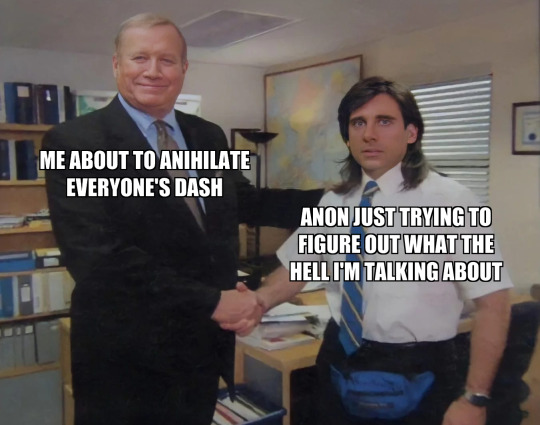
SO. the way diegetic and non-diegetic are normally used is to talk about music and sound design in movies/tv shows. in case you aren't familiar with that concept, here's a rundown:
diegetic sound is sound that happens within the world of the movie/show and can be acknowledged by the characters, like a song playing on the stereo during a driving scene, or sung on stage in Phantom of the Opera. it's also most other sounds that happen in a movie, like the sounds of traffic in a city scene, or a thunderclap, or a marching band passing by. or one of the three stock horse sounds they use in every movie with a horse in it even though horses don't really vocalize much in real life, but that's beside the point, the horse is supposed to be actually making that noise within the movie's world and the characters can hear it whinnying.
non-diegetic sound is any sound that doesn't exist in the world of the movie/show and can't be perceived by the characters. this includes things like laugh tracks and most soundtrack music. when Duel of Fates plays in Star Wars during the lightsaber fight for dramatic effect, that's non-diegetic. it exists to the audience, but the characters don't know their fight is being backed by sick ass music and, sadly, can't hear it.
the lines can get blurry between the two, you've probably seen the film trope where the clearly non-diegetic music in the title sequence fades out to the same music, now diegetic and playing from the character's car stereo. and then there are things like Phantom of the Opera as mentioned above, where the soundtrack is also part of the plot, but Phantom of the Opera does also have segments of non-diegetic music: the Phantom probably does not have an entire orchestra and some guy with an electric guitar hiding down in his sewer just waiting for someone to break into song, but both of those show up in the songs they sing down there.
now, on to how I apply this to bdsm in fiction.
if I'm referring to diegetic bdsm what I mean is that the bdsm is acknowledged for what it is in-world. the characters themselves are roleplaying whatever scenarios their scenes involve and are operating with knowledge of real life rules/safety practices. if there's cnc depicted, it will be apparent at some point, usually right away, that both characters actually are fully consenting and it's all just a planned scene, and you'll often see on-screen negotiation and aftercare, and elements of the story may involve the kink community wherever the characters are. Love and Leashes is a great example of this, 50 Shades and Bonding are terrible examples of this, but they all feature characters that know they're doing bdsm and are intentional about it.
if I'm talking about non-diegetic bdsm, I'm referring to a story that portrays certain kinks without the direct acknowledgement that the characters are doing bdsm. this would be something like Captive Prince, or Phantom of the Opera again, or the vast majority of bodice ripper type stories where an innocent woman is kidnapped by a pirate king or something and totally doesn't want to be ravished but then it turns out he's so cool and sexy and good at ravishing that she decides she's into it and becomes his pirate consort or whatever it is that happens at the end of those books. the characters don't know they're playing out a cnc or D/s fantasy, and in-universe it's often straight up noncon or dubcon rather than cnc at all. the thing about entirely non-diegetic bdsm is that it's almost always Problematic™ in some way if you're not willing to meet the story where it's at, but as long as you're not judging it by the standards of diegetic bdsm, it's just providing the reader the same thing that a partner in a scene would: the illusion of whatever risk or taboo floats your boat, sometimes to extremes that can't be replicated in real life due to safety, practicality, physics, the law, vampires not being real, etc. it's consensual by default because it's already pretend; the characters are vehicles for the story and not actually people who can be hurt, and the reader chose to pick up the book and is aware that nothing in it is real, so it's all good.
this difference is where people tend to get hung up in the discourse, from what I've observed. which is why I started using this phrasing, because I think it's very crucial to be able to differentiate which one you're talking about if you try to have a conversation with someone about the portrayal of bdsm in media. it would also, frankly, be useful for tagging, because sometimes when you're in the mood for non-diegetic bodice ripper shit you'd call the police over in real life, it can get really annoying to read paragraphs of negotiation and check-ins that break the illusion of the scene and so on, and the opposite can be jarring too.
it's very possible to blur these together the same way Phantom of the Opera blurs its diegetic and non-diegetic music as well. this leaves you even more open to being misunderstood by people reading in bad faith, but it can also be really fun to play with. @not-poignant writes fantastic fanfic, novels, and original serials on ao3 that pull this off really well, if you're okay with some dark shit in your fiction I would highly recommend their work. some of it does get really fucking dark in places though, just like. be advised. read the tags and all that.
but yeah, spontaneous writer plug aside, that's what I mean.
#I found their original stuff while I was researching various waterhorses and their folklore for no reason#because one of the characters in their original work happens to be an each uisge#and then it turned out it ALSO included a lot of figures from welsh folklore in general#so yknow if you happen to have my incredibly specific hyperfixations you'll love it but even if you don't it's great#I didn't mean to bring up phantom of the opera so much it just happens to be very relevant to a lot of my talking points#I haven't actually seen it in years
15K notes
·
View notes
Text
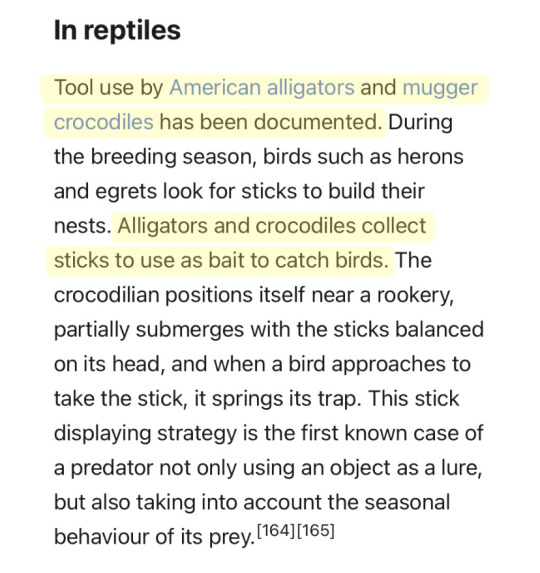
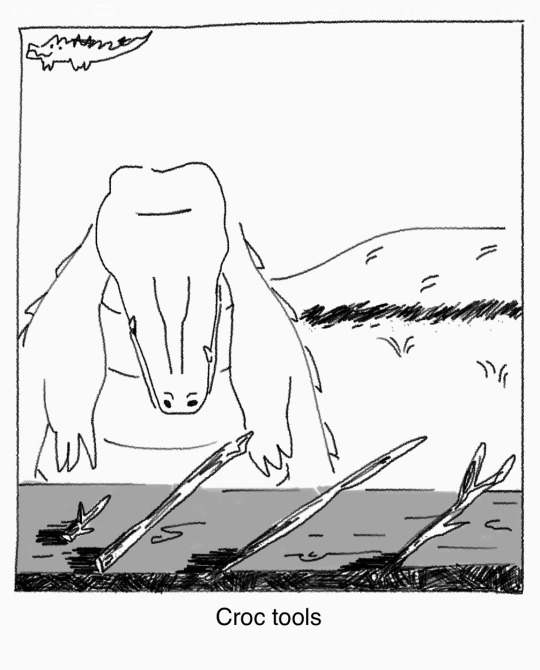
no fucking way
#sketches#comics#the far side#crocodiles#my art#i don’t know how to tag this.#also i should probably say. i tried to look into it further and i haven't seen hard hard evidence that they do this on purpose#personifying animals is tempting but ultimately i think it's just hot speculation atm. crocodilians are famously tough to research too#like the advantages may be a coincidence or just pure curiosity/play. which is also really cute...love those guys#sorry for the misinformation! light theory only afaik#comic
64K notes
·
View notes
Text
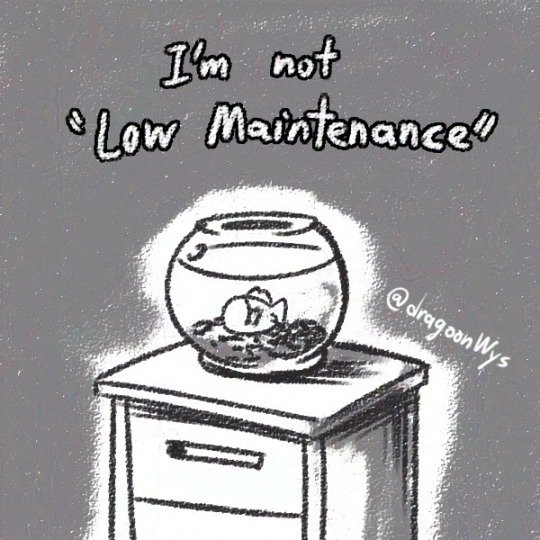

Many times I feel like the sad fish you 'buy for a child because its low maintenance', stop doing that
#fish are not low maintenance and deserve to be treated like other more easily expressive pets#do your research on the fish species and what they need damn it#same goes for humans#Its a I have a mouth and I cant scream thing#meme#digital art#doodles#mental health#pets#fish#my art
15K notes
·
View notes
Text

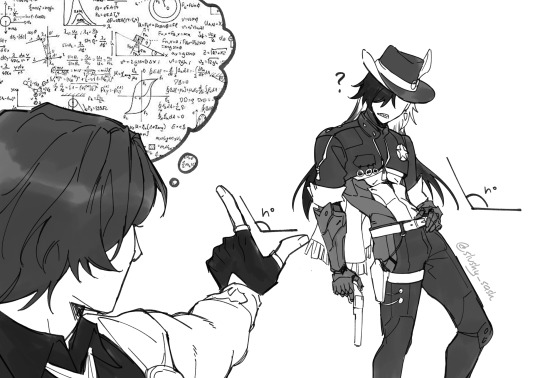
very important research
#cunty ah cowboy#what is he researching you may ask#he's studying the relationship between the angle of body leaning and cuntiness#its a positive correlation#honkai star rail#hsr#dr ratio#veritas ratio#boothill#my art
12K notes
·
View notes
Text
changes and trends in horror-genre films are linked to the anxieties of the culture in its time and place. Vampires are the manifestation of grappling with sexuality; aliens, of foreign influence. Horror from the Cold War is about apathy and annihilation; classic Japanese horror is characterised by “nature’s revenge”; psychological horror plays with anxieties that absorbed its audience, like pregnancy/abortion, mental illness, femininity. Some horror presses on the bruise of being trapped in a situation with upsetting tasks to complete, especially ones that compromise you as a person - reflecting the horrors and anxieties of capitalism etc etc etc. Cosmic horror is slightly out of fashion because our culture is more comfortable with, even wistful for, “the unknown.” Monster horror now has to be aware of itself, as a contingent of people now live in the freedom and comfort of saying “I would willingly, gladly, even preferentially fuck that monster.” But I don’t know much about films or genres: that ground has been covered by cleverer people.
I don’t actually like horror or movies. What interests me at the moment is how horror of the 2020s has an element of perception and paying attention.
Multiple movies in one year discussed monsters that killed you if you perceived them. There are monsters you can’t look at; monsters that kill you instantly if you get their attention. Monsters where you have to be silent, look down, hold still: pray that they pass over you. M Zombies have changed from a hand-waved virus that covers extras in splashy gore, to insidious spores. A disaster film is called Don’t Look Up, a horror film is called Nope. Even trashy nun horror sets up strange premises of keeping your eyes fixed on something as the devil GETS you.
No idea if this is anything. (I haven’t seen any of these things because, unfortunately, I hate them.) Someone who understands better than me could say something clever here, and I hope they do.
But the thing I’m thinking about is what this will look like to the future, as the Victorian sex vampires and Cold War anxieties look to us. I think they’ll have a little sympathy, but they probably won’t. You poor little prey animals, the kids will say, you were awfully afraid of facing up to things, weren’t you?
#this is the sort of observation I make here that people#go off and write their thesis about#so while I’m not expecting to be the first or cleverest person to say this#if you do use it as a springboard#tell me if you get a good grade ok?#I’ll be tremendously proud of you#like if you take a shitpost and use it to craft deep attentive thought on something important#I just think that’s probably the most noble use of a human brain#it makes me want to take off my hat and slam it to the ground in inexpressible emotion#it’s a cowboy hat btw#and I say something like GOLDURN IT THAT KID SURE HAS DELIVERED.#ok so don’t deny me this#especially if you correct me after a long research journey#GOLDURN IT THE KID IS RIGHT!
24K notes
·
View notes
Text
in case you wondering what twitters like rn the answer is "not good"

#crow.txt#this got like 5k notes rn. hi to everyone who saw my hastily cropped screenshot that included my research folder for class#edit: 23k notes
47K notes
·
View notes
Text
the cognitive dissonance from people who want the products of modern medicine but get weird about animal research. like im sorry but this is necessary for the survival of the society we currently live in. and the scientists who work on these things are not evil cackling psychopaths. anyone you talk to in animal research has incredibly complex feelings about their work and incredibly complex relationships to the animals in their care. there are regulations and oversight and penalties in place to make the work as humane as possible and scientists are overwhelmingly the ones enforcing and advocating for better care.
#i work with invertebrates so nobody cares about what i do but literally everybody else in my building does mice/dogs/primates#science#biology#research#animal testing
55K notes
·
View notes
Text
An excerpt from the trial of Elinor Crane, who was arrested in Middlesex in 1693 on suspicion of burglary. A witness claimed one of the burglars was a woman in men's clothing, and Elinor had previously been seen in the area dressed as a man.

"But the Court asking her why she went in Mans Apparel, the Prisoner replyed, She went to Wooe a Widow. Upon the whole Matter the Jury brought her in not Guilty."
(source: Old Bailey Proceedings: Accounts of Criminal Trials, April 26, 1693.)
#'why were you wearing pants?' 'hot milfs in my area' 'understandable - next case'#history#17th century#1690s#crime history#lgbtq+ history#gender roles#things I find while researching other things
12K notes
·
View notes
Text

Goofy tyrannosaurid playing in the snow ☃️
#dinosaurs#path of titans#alioramus#Ronja the Panjuran (tm)#my research for this involved watching every single video on youtube of goofy animals playing in the snow it was a soul clensing experience
12K notes
·
View notes
Text

got thinking about gerard way tour outfit predictions that never came 2 be… bloody wedding dress…
#they’ve got legs and a slit throat!#this is one i believed 2 be totally out of the question bc it would be too bulky restrictive etc#but then i was doing my research and i discovered The 60s Wedding Mini Dress and i was like oh my god she would#kind of a mod vibe but w more gothic detail so it still reads as bridal out of context yk yk. perhaps#mcr#gerard way#digital art#x
9K notes
·
View notes
Text

just some designs mainly created because I wanted to draw hakama and then it spiral out from there
bald zuko under the cute
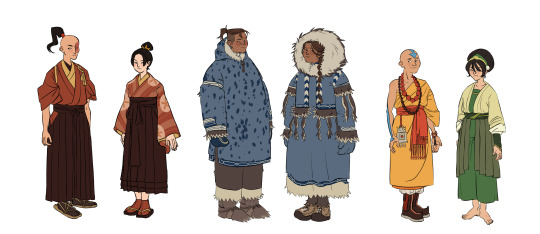
#avatar the last airbender#atla redesigns#atla#atla fanart#atla zuko#atla azula#atla sokka#atla katara#atla aang#avatar aang#toph beifong#my art#I also have some wip designs for summer clothes for most of them and before anyone says anything for the fire nation theyre thai inspired#doing research for this spiraled into reading 3 fairly big books in the span of 2 weeks just cause#i ALSO have adult designs cooking#this was really inspired by all the girls on campus in their hakama a few weeks ago...wahhh so pretty
6K notes
·
View notes
Text


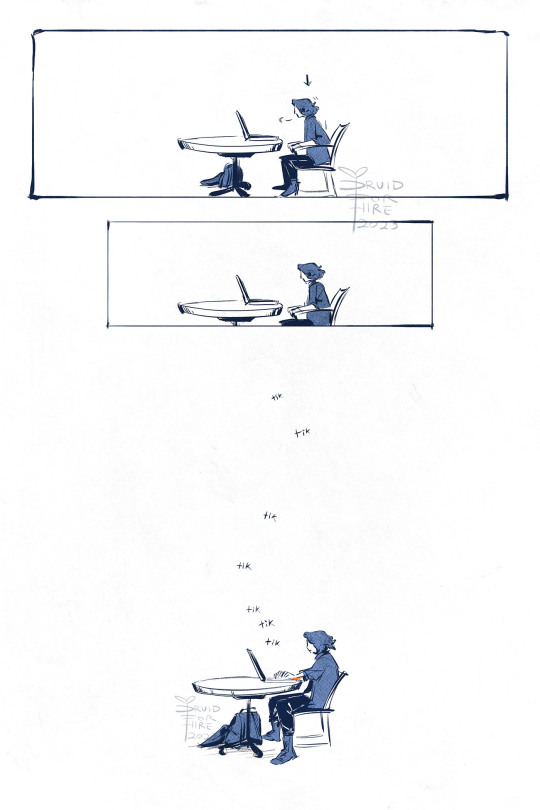
[images ID: three images of a comic titled "one must imagine sisyphus happy" by druid-for-hire. it is a visual narrative beginning with someone with wrist pain (depicted by bright orange nerves) working at a drafting table. the reader is shown the same wrist as the person uses it for many everyday tasks such as carrying a grocery basket, pushing elevator buttons, typing, and doing dishes, until the pain dissolves all the panels into chaos. the person then performs several physical therapy exercises until the pain subsides. they sit back down at a desk with their laptop, sigh, and begin typing. a small spark of pain reappears. end id]
a fun little piece i made during the semester and submitted into our school comic anthology! (which you can buy at the Static Fish table at MoCCAFest in NYC ;] ). it's about artists and injury
#comic art#comics#original comic#chronic pain#carpal tunnel#tendonitis#my art#original#edit: what a delightful surprise to see this take off#this was made for class on very low fuel and very few thoughts and late at night and exhausted#the prompt was just a wordless narrative essay. three pages. and i had nothing and no ideas#and my head hurt and i was too tired to think about doing any of the like. research and mind mapping and ideating i'd do otherwise#but my arm hurt#so i decided to do a thing about arm hurty#i'm surprised to see so many people finding it resonating with them#but then again i shouldn't be. the universal lies in the specific#i should make more things about smaller stuff
10K notes
·
View notes
Text
Mike: is struggling financially and mentally
Vanessa: *throws his prescription medicine*
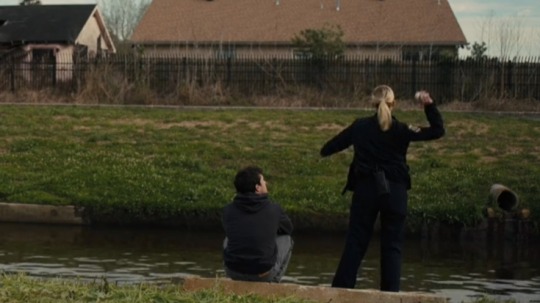

Edit: it's not just about whether Mike needed the drugs (which he didn't, i understand), it's about the fact SHE LITTERED and most likely polluted the river too.
#oh whats that? you been taking these on a regular schedule for the past 10+ years? nah you'll be fine going cold turkey :))#and these are only like $20-$50US+ a week or smt you'll be fine lol let me just litter this#fnaf movie spoilers#fnaf#fnaf movie#five nights at freddy's#mike schmidt#vanessa monroe#elizabeth afton#josh hutcherson#elizabeth lail#william afton#halloween#happy halloween#(btw idk usa sleeping prescription medication prices i just went off my research. but if you know lmk)
17K notes
·
View notes
Text
gays help me out, also leave your answer + your orientation in the tags
#this is really important#its super scientific demographic research#my hypothesis is mlm will pick cowboys and wlw will pick pirates#but i must find out#polls#tumblr polls#pirates#wizard#cowboy
19K notes
·
View notes